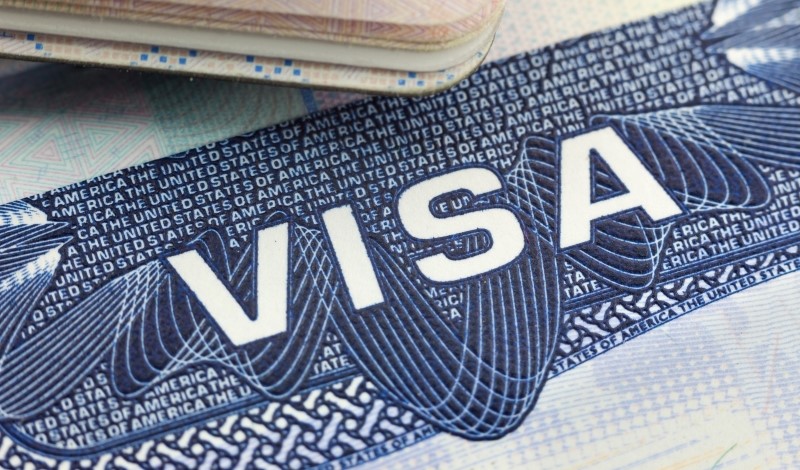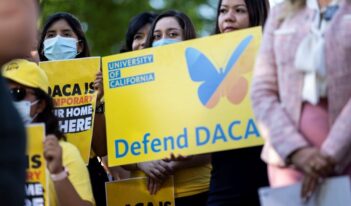
U.S. immigration agency proposes new rule to address problems with temporary work visas.
Does a bakeshop cashier become a baker by kneading dough?
The U.S. Department of Labor thought so when it charged a Maine bakery with violating labor laws in 2018. The bakery hired foreign workers as checkout attendants through a temporary work visa program but then put them to work as bakers and failed to pay the wage difference. The Labor Department forced the bakery to pay the foreign workers $73,115 in back wages.
The U.S. Citizenship and Immigration Services (USCIS)—a U.S. Department of Homeland Security agency that issues immigration benefits—proposed a rule recently to improve the integrity of temporary work visa programs and enhance worker protections.
The Immigration and Nationality Act provides nonimmigrant foreign laborers admission to the United States to work temporarily in the agricultural sector through the H-2A visa program and in certain non-agricultural jobs—such as hospitality work—through the H-2B visa program.
The Labor Department requires an employer to show that there are no U.S. workers “willing, qualified, and able” to fill the advertised position before hiring foreign workers through the H-2 programs. In addition, an employer must demonstrate that hiring a foreign worker will not hurt national wages or working conditions.
Some advocates for immigrant laborers argue that the H-2 programs often expose foreign workers to wage theft and exploitation. H-2A farmworkers, for example, are not protected by the National Labor Relations Act, which guarantees private sector workers the right to organize for better working conditions. These advocates also suggest that the Labor Department’s poor oversight of the H-2 programs allows companies that break labor laws to continue hiring foreign workers with impunity.
Moreover, because the legal statuses of H-2 visa holders are tied to their petitioning employers, foreign workers may hesitate to report their employers for violations such as unpaid wages or poor working conditions for fear of retaliation.
USCIS seeks to provide H-2 visa holders new whistleblower protections through the proposed rule. In addition, the proposed rule would loosen ties between foreign workers and their petitioning employers. If H-2 workers lose their jobs or change employers, the proposed rule allows workers to maintain their H-2 status in the United States for 60 days while they find new employment. This change also enables other prospective employers to hire them without submitting a new petition.
In addition, the proposed rule would require USCIS to conduct compliance reviews and on-site inspections to confirm that employers remain in good standing with the H-2 programs.
Some industry experts express concern that the proposed rule imposes additional burdens on employers but fails to address prevailing labor shortages. USCIS issued over 257,000 H-2A visas to employers in 2021, representing a 365 percent increase over the past decade. Although Congress caps H-2B visas at 66,000 per year, demand for these visas routinely exceeds Congress’s allocation.
USCIS will accept comments on the proposed rule until November 20, 2023. Industry and trade groups, however, have asked USCIS for a 60-day extension on the notice-and-comment period to provide substantive comments on the proposed changes.
In this week’s Saturday Seminar, scholars examine challenges surrounding the H-2A and H-2B programs and provide recommendations to improve them.
- In a brief for the Migration Policy Institute, Julia Gelatt argues that the executive branch should use existing migration pathways to fill certain labor market vacancies. To this end, Gelatt recommends promoting H-2A and H-2B visa use by Central Americans. She suggests that these temporary work visas could address labor shortages in the United States and bolster economic development in Central America. In particular, Gellatt notes that because the H-2A program does not have an annual numerical cap, it could enable significant numbers of Central Americans to work in the United States, opening labor pathways and meeting U.S. employer needs.
- In a Congressional Research Service report, Andorra Bruno notes that the H-2A and H-2B programs attempt to achieve two goals simultaneously: respond to “legitimate employer needs for temporary labor” and “provide adequate protections” for workers. Bruno observes that many policymakers argue that the H-2 programs fail on both fronts. She outlines lingering policy questions and considerations about the programs, including congressional debates surrounding the dairy industry’s exclusion from the H-2A program. Bruno also highlights legislative efforts to increase the statutory cap on H-2B visas.
- A recent White House report details the H-2B Worker Protection Task Force’s plans to improve the H-2B program. The Task Force announced new efforts to protect H-2B workers in labor disputes. In particular, the Task Force noted that foreign workers will not suffer adverse immigration consequences if labor disputes lead them to remain in the United States beyond their visa expiration date. The Task Force also discussed new data-based initiatives to combat employment discrimination against H-2B workers.
- In a report, Daniel Costa of the Economic Policy Institute argues that the Biden Administration should create new rules to protect H-2B workers from lawbreaking employers. Costa claims that wage theft pervades the H-2B program, citing Labor Department data suggesting that employers have withheld at least $1.8 billion from H-2B workers over the last two decades. Costa argues that the Biden Administration should ban companies that violate H-2B requirements from participating in the program in the future and require companies to report their employment plans before hiring H-2B workers.
- Congress and the Biden Administration should raise or remove the annual cap on H-2B visas, argues David J. Bier in an article for the CATO Institute. Bier notes that the current cap on H-2B visas does not match the demand for H-2B workers. He argues that this excess demand leaves jobs unfilled and encourages unauthorized employment. Bier also contends that complicated and expensive H-2B requirements deter employers who would otherwise hire H-2B workers. Accordingly, Bier recommends streamlining the H-2B application process.
- In an article published in the Agricultural and Resources Economics Review, Skyler Mark Simnitt of the U.S. Department of Agriculture and Gulcan Onel of the University of Florida examine differences in hourly earnings between citrus harvest workers in Florida who hold H-2A visas and undocumented workers without work authorization. Simnitt and Onel find that H-2A workers earned between 18 percent and 23 percent higher hourly wages. The authors observe that shortages in the agricultural sector drive demand for H-2A visas. Although the costs of employing H-2A visa holders may be higher, Simnitt and Onel contend that employing more H-2A visa holders may yield other benefits for citrus farms, such as a more stable workforce.
The Saturday Seminar is a weekly feature that aims to put into written form the kind of content that would be conveyed in a live seminar involving regulatory experts. Each week, The Regulatory Review publishes a brief overview of a selected regulatory topic and then distills recent research and scholarly writing on that topic.



